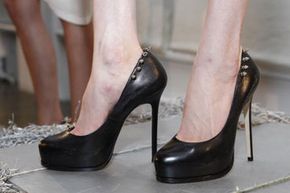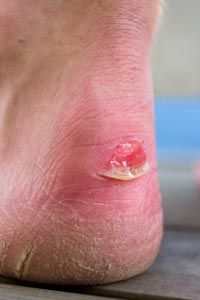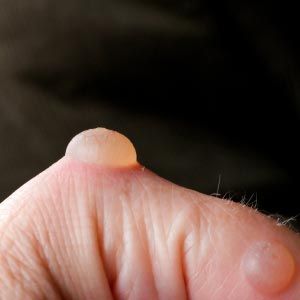Jimmy Choo. Manolo Blahnik. Christian Louboutin. If these names mean nothing to you, then you're obviously not a fan of the high-heeled shoe. Fashionistas everywhere spend outrageous amounts of money on stylish heels. Many women say you can't have too many pairs of shoes. High heels make you look taller and give the illusion of longer, slimmer legs. Plus, many people simply find them fashionable.
Lest you think that high heels are only for the ladies, though, we'd like to point out that high heels actually started with men! Back in 9th century Persia, men wore shoes with a high heel and sloped pitch for riding horses. In the early 1700s, France's King Louis XIV tottered around in 5-inch heels.
Advertisement
During the Renaissance period, women wore platform heels -- some up to 8 inches high -- in order to illustrate their wealth and standing in the community. Heels became mostly a fashion statement for women after that. However, the 1970s ushered in another era of platform shoes, and this time many men jumped on the bandwagon. Think John Travolta in "Saturday Night Fever."
Today, thanks in part to the TV series "Sex and the City," sky-high heels and stilettos are back in style (really, though, did they ever leave?). However, style does come with a price. Medical professionals say that high-heeled shoes not only constrict your foot and toes, but also put increased weight on that constricted area because of the forward pitch of the shoe. High heels can aggravate bunions, trigger corns, calluses and hammertoe -- and can even cause stress fractures in some women's feet. Doctors don't recommend women wear high heels on a regular basis for these reasons.
Those problems are all more long-term, of course. Let's talk about a more common issue. One of the everyday, frequent problems your high heels may cause are blisters. While not terribly serious, blisters can be quite painful and more than a little annoying. They take a while to heal and sometimes become infected. Your stylish shoes aren't quite so stylish with a bloody Band-Aid hanging out of the back!
Don't trade your gorgeous new heels for a pair of Crocs just yet, though. We have some great advice on how to avoid those pesky blisters. First up, we'll talk a little bit about blisters and how they form.
Advertisement


